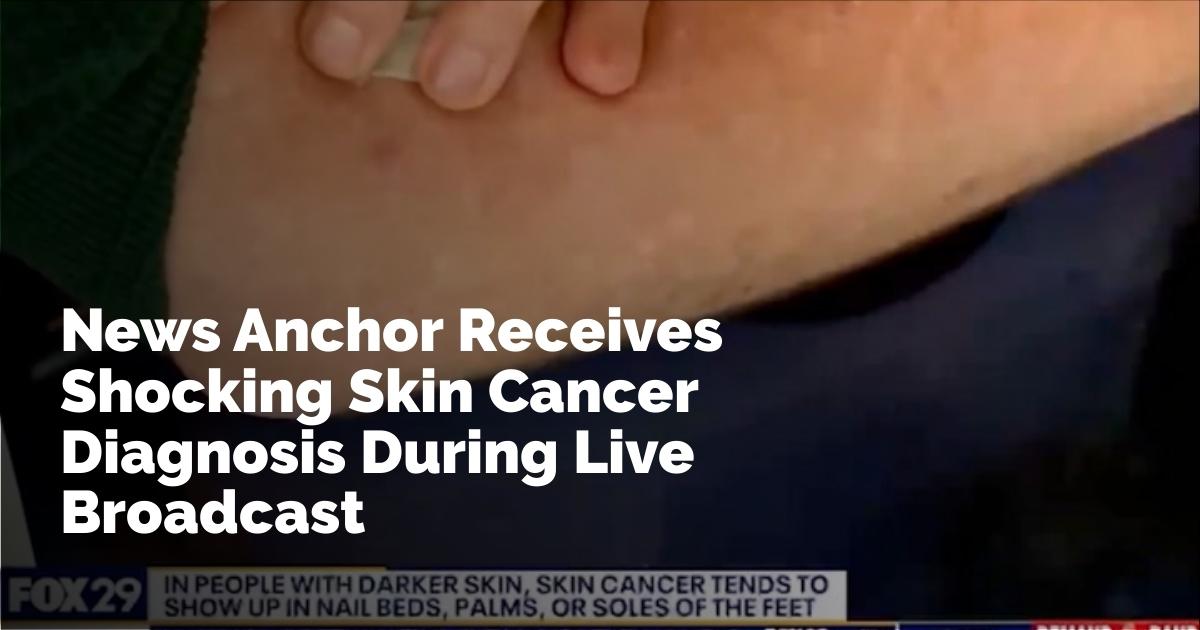A Shocking On-Air Discovery
In an unexpected turn of events, a Fox News presenter, Mike Jerrick, co-host of Good Day Philadelphia, received a life-changing health update while live on-air. During a segment focused on skin cancer awareness and prevention, Jerrick was joined by dermatologist Dr. Joanna Walker, who identified a concerning mole on his arm.
The Moment of Surprise
As the segment progressed, Dr. Walker pointed to a mole on Jerrick’s arm, noting it exhibited "all the features of the most common type of skin cancer." This startling revelation unfolded before viewers, capturing Jerrick's immediate reaction of disbelief. "What?" he exclaimed, clearly taken aback by the sudden diagnosis. Always the professional, Jerrick quickly turned his focus to understand the next steps, inquiring whether the mole needed to be "burned or cut off."
Reassurance Amid Concern
Despite the shocking diagnosis, Dr. Walker provided reassurance on-air, emphasizing that the condition was "very treatable." She strongly advised Jerrick to schedule an appointment for further evaluation and removal of the mole without delay. Her calm demeanor and professional advice underscored the importance of timely medical intervention in cases of suspected skin cancer.
Raising Awareness Through Personal Experience
This extraordinary moment not only highlighted the unpredictable nature of live television but also served an educational purpose. By sharing his unexpected diagnosis, Jerrick inadvertently became a case study, illustrating the critical importance of regular skin checks and early detection in combating skin cancer. Such public revelations can often spark increased awareness and proactive measures among viewers.
Understanding the Commonality of Skin Cancer
Skin cancer is one of the most prevalent types of cancer, with various forms including basal cell carcinoma, squamous cell carcinoma, and melanoma, the latter being the most dangerous. Jerrick’s diagnosis falls under the category of common skin cancers, which are highly treatable if detected early. Dr. Walker's identification of the mole's characteristics is a textbook example of how dermatologists diagnose potential cases.
The Importance of Regular Skin Checks
Routine skin checks, either self-examinations or performed by a healthcare professional, are essential in catching potential issues early. Dr. Walker's on-air diagnosis exemplifies how a trained eye can spot irregularities that might otherwise go unnoticed. Regular check-ups can lead to early intervention, significantly increasing the chances of successful treatment and reducing the risk of more serious health complications.
Preventive Measures and Next Steps
In addition to regular checks, there are several preventive measures that can help reduce the risk of skin cancer. Using sunscreen, wearing protective clothing, and avoiding excessive sun exposure are simple yet effective strategies. For Jerrick, the immediate next step involves a detailed medical evaluation to confirm the on-air diagnosis and undertake the necessary surgical procedures to remove the mole.
A Cautionary Tale with a Positive Outlook
While the live diagnosis was unexpected and momentarily startling, it serves as a cautionary tale with a positive outlook. As Dr. Walker indicated, Jerrick's condition is treatable, and this public health lesson serves as a reminder to audiences about the importance of vigilance concerning personal health. Jerrick’s vulnerability has, unexpectedly, become a powerful catalyst for public education on skin cancer prevention and detection.
This incident underscores a powerful message: awareness and prompt action are key components in ensuring health issues are addressed before they escalate. Whether on-air or off, staying informed and proactive about health screenings can make all the difference.
출처 : Original Source

